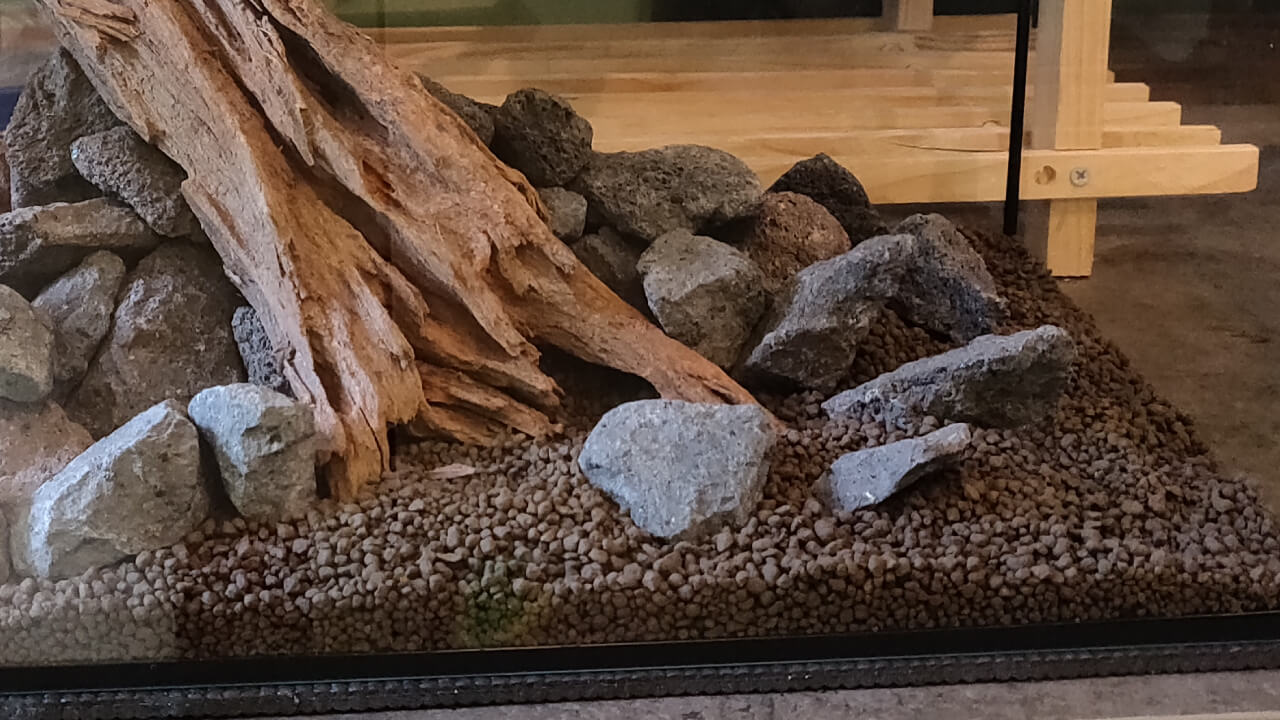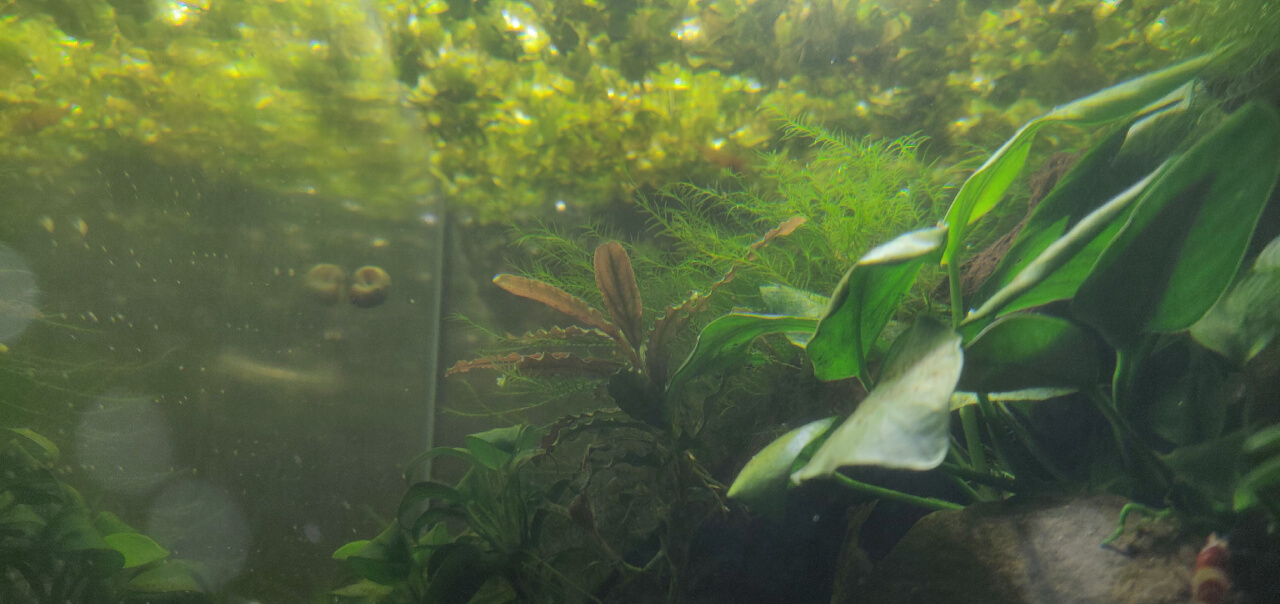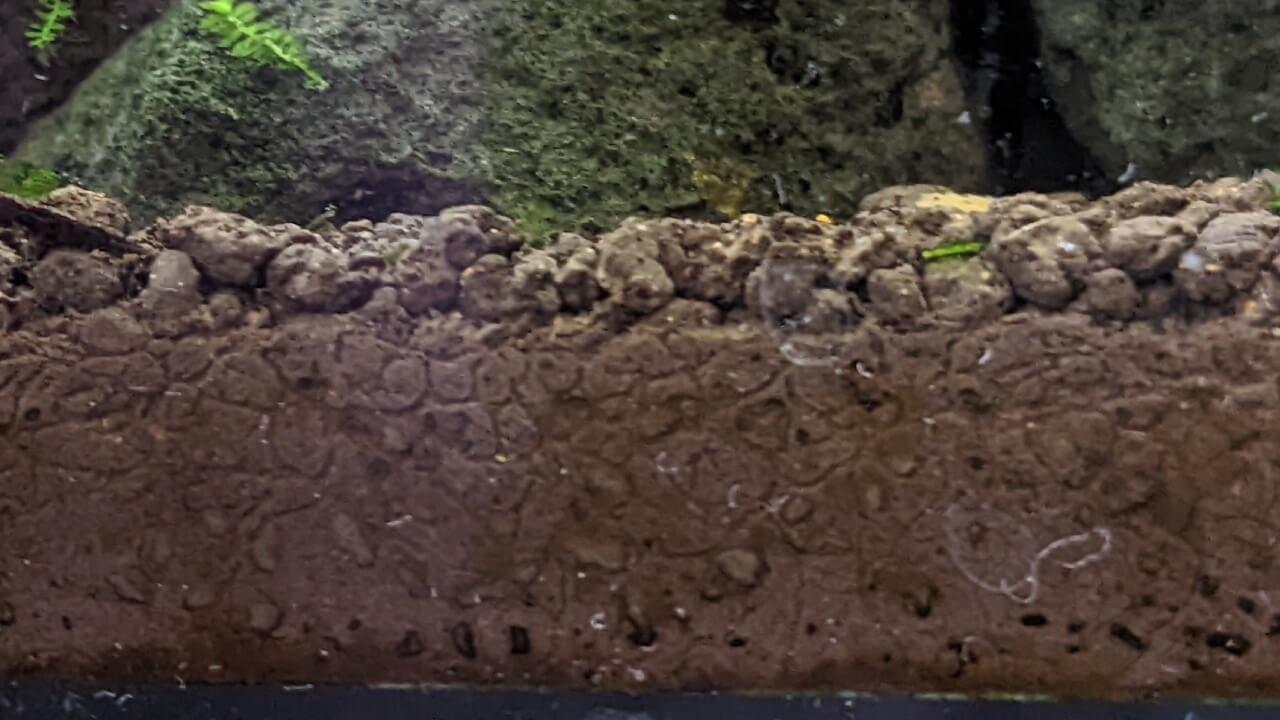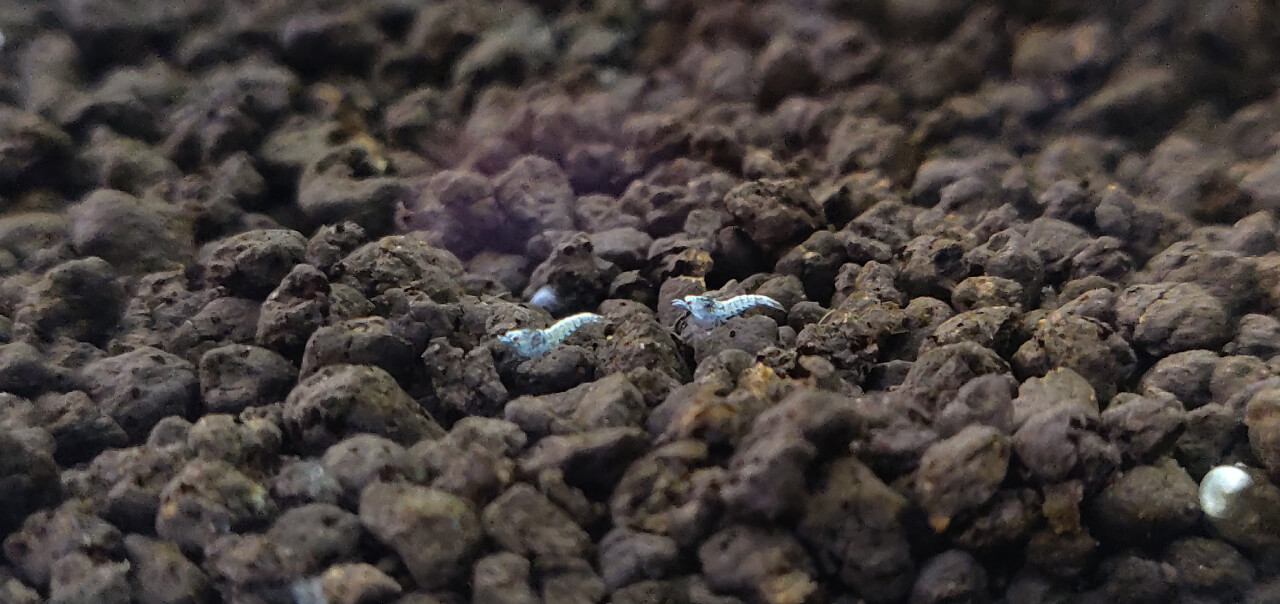What is an active substrate?
An active substrate in a shrimp tank makes the water more acidic, as well as keeping the pH stable from swings. They are also sometimes known as buffering substrates.
Caridina shrimp should be kept in water with a pH roughly between 5.5 and 6.5. They also prefer water with a KH between 0 and 1, meaning the water has very little buffering capacity.
A low buffering capacity will make the water susceptible to pH parameter swings. These sorts of swings are more apparent in planted tanks.
pH swings in planted tanks
Carbon dioxide from the air dissolves into the aquarium water, creating carbonic acid.
As the plants photosynthesize, they extract this carbon from the water, and this causes the pH to increase as it becomes less acidic.
During the night, the plants stop producing oxygen and taking in the carbon, causing the pH to decrease again.
Using an active substrate performs a similar role to Carbonate Hardness in the water of a Neocaridina tank, without using carbonates.
Suggested choices
The following substrates are popular options for shrimp tanks, and are great choices. You may be able to find other options that work for you, but this list should help to give you a starting point.
Why use buffering substrate for Bee shrimp?
The main reasons you want to use an active substrate in your Caridina shrimp tanks are to increase the acidity and keep the parameters stable.
Increase acidity
In the wild, Bee shrimp live in streams and rivers. Leaves from nearby trees fall into these streams and leech tannins into the water, raising the acidity.
To let your shrimp thrive, you should try to replicate their natural environment as closely as you can.
You could make yourself a blackwater tank by using tannins to lower the pH, such as with Indian Almond leaves for example. However, without a buffering substrate, you’d likely see pH swings throughout the day.
Keep parameters stable
Freshwater shrimp love stability, even if the water parameters are outside their ideal range. The pH level is also a very important parameter to monitor in your Caridina tanks.
The buffering properties of an active substrate reduces these changes, keeping your shrimp happy and healthy.
Over time, the buffering capacity will reduce, and eventually you’ll need to replace the substrate to maintain stable parameters.
Particle sizes
Substrates come in a few different shapes and sizes. You can use small particles like Amazonia soil, or go with larger gravel pieces like Fluval Stratum.
There isn’t really a massive difference between these options, it’s mostly personal preference on how it looks. There are a few small reasons you may want to pick one size over the other, though.
Soil

A soil type substrate will normally be very easy to plant in, the smaller particles will fill up any gaps around the plant roots and hold them in place.
However, as the particles are smaller already, they normally break down into a dusty powder quicker than a gravel substrate would.
You may also get anaerobic pockets of gas building up if you make your substrate too deep.
Gravel
Gravel pieces allow the substrate to “breathe” more, as there will always be larger gaps between the gravel than with a soil.
You may find pieces of food can fall through the gaps and rot, but this can be easily avoided by using a feeding dish.
Planted tanks
It’s common for active substrates to contain a source of ammonia, which helps start the tank cycling process, and provides lots of nutrition for plants.
You likely won’t need to use fertilizer in your planted shrimp tank for a while, if you use a popular active substrate.

Choosing a soil type substrate, like Amazonia Soil, will also make it much easier to bury plants like Cryptocorynes without them floating away. Before long, their roots will spread out to take in all the beneficial nutrients, holding the plant steady.
It won’t only be the buried plants that benefit from the extra nutrients - any floating plants will benefit from them too.
How to use active substrate
Adding an active substrate into a tank is incredibly easy and pretty hands-off.
The first and most important piece of advice is: do not rinse it. Rinsing it would wash away some nutrients and make it much less effective in your aquarium. Using tap water would also use up some buffering capacity, and mean the substrate needs replacing sooner.
As these substrates sometimes also contain a source of ammonia, they make cycling as simple as just add water. You should wait at least a couple of months before you add any shrimp, and test that ammonia has stopped coming out of the soil.
When adding water to the aquarium, it’s a good idea to place a small plate onto the substrate first, and pour the water over the plate. This will baffle the water movement and prevent the substrate particles moving around too much.
You should also think about your filter placement, to avoid pushing the substrate around too much. This only really applies if you’re using a filter like a Hang on Back, a sponge filter won’t cause any issues.
You may get small particles, like bits of wood, that float to the top after adding water. These bits should be removed to keep the water clean.
It’s completely normal for the water to be cloudy for the first couple of days, as all the dust settles down and the bacterial bloom phase passes. If your water stays cloudy for a while, you should be able to clear it up with some water changes.
How deep should the substrate be?
Ideally, you should try to keep the substrate between 1 and 3 inches.
Going too thin will mean the substrate won’t be very effective, and you might still experience pH swings through the day. It could also mean that the water doesn’t become acidic enough for the Caridina shrimp to thrive.
On the other end of the spectrum, going too high with substrate could cause the water to become too acidic.
Thick substrate can also cause anaerobic pockets of gas to build up, which can cause health issues for the shrimp if it’s left to build up.
How to make the substrate last longer
You should expect your active substrate to last for somewhere between 12 and 18 months. There are a few tips that will help you reach the higher end of the expected lifetime:
- Don’t use tap water
- Avoid disturbing the soil
Do not use tap water, or water with a KH of 1 or higher. The substrate will exhaust itself faster if it’s fighting with carbonates and bicarbonates in the water, too.
Avoid stirring up the soil too much. This can cause the particles to break down into dust faster, which then compacts on the floor. The compacted form will be much less effective at buffering the water compared to when in loose particle form.
If you use a filter with a water pump, like a Hang on Back, you should think about protecting the substrate from the water flow with hardscape, for example.
Replacing the substrate
Unfortunately, the big drawback with using active substrates is that they need replacing every so often. The replacement process is quite a big task, often basically requiring a tank rebuild.
With proper care, you might be able to use the same substrate for up to two years, but it’s normally closer to 12 to 18 months.
How to tell it’s time to replace
You’ll know it’s time to replace your substrate when you notice the pH changing, and the particles may become packed together like clay.

When the particles break down and compact, the surface area of the substrate decreases massively, and this makes it much less efficient at controlling the water parameters.

